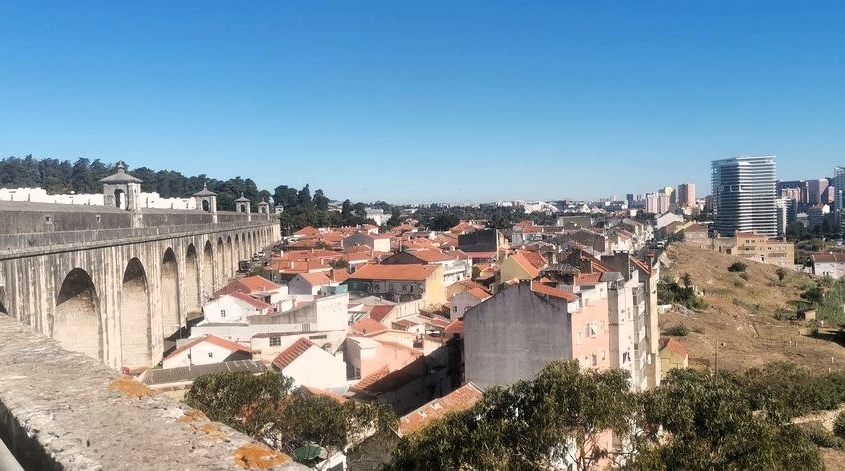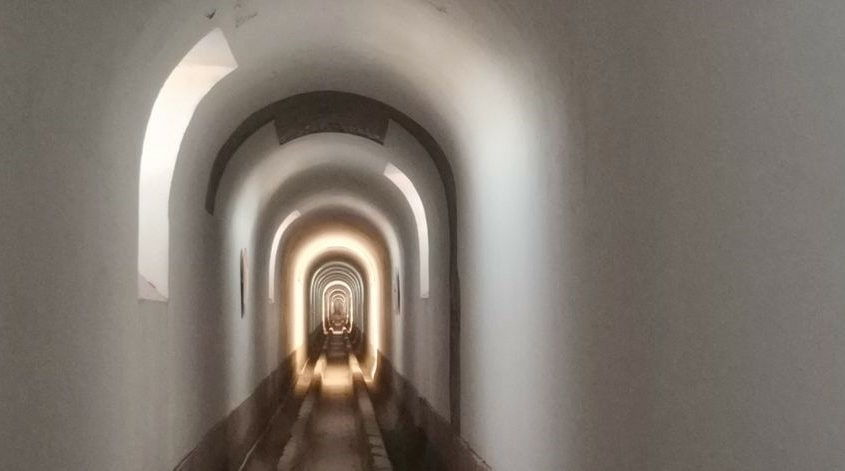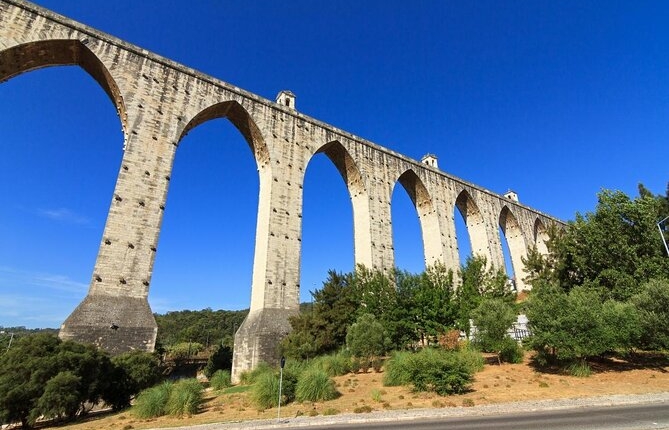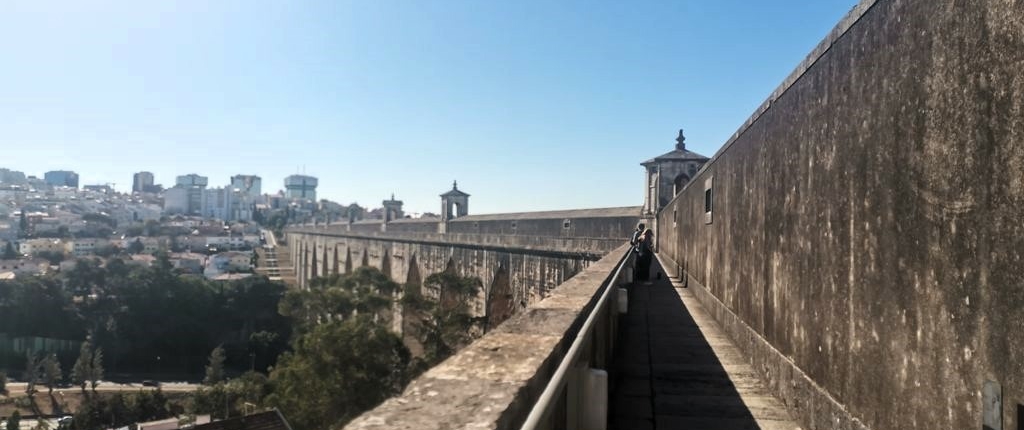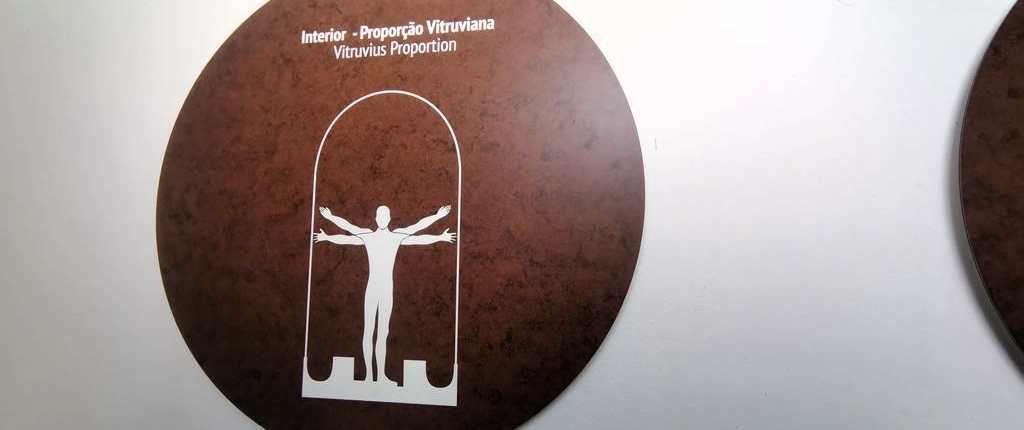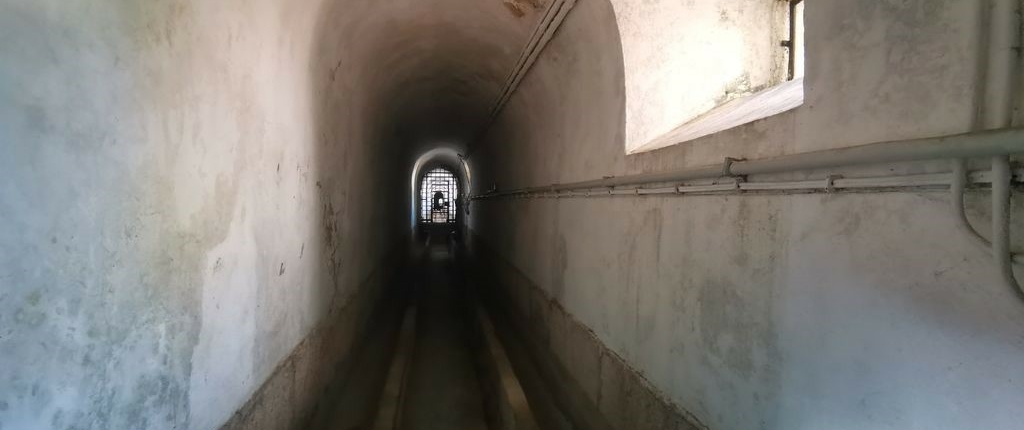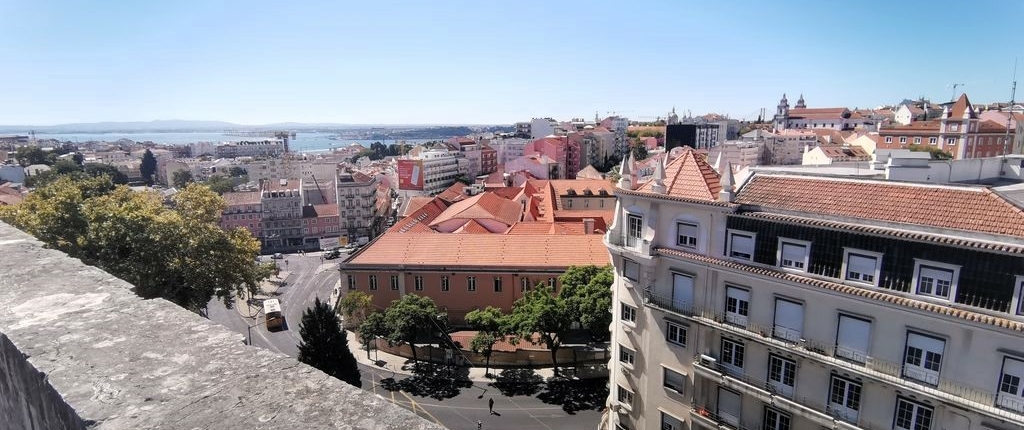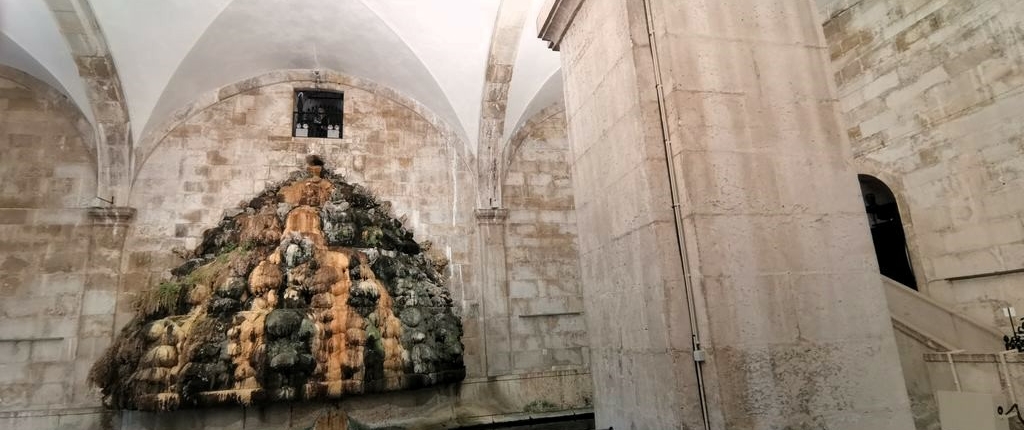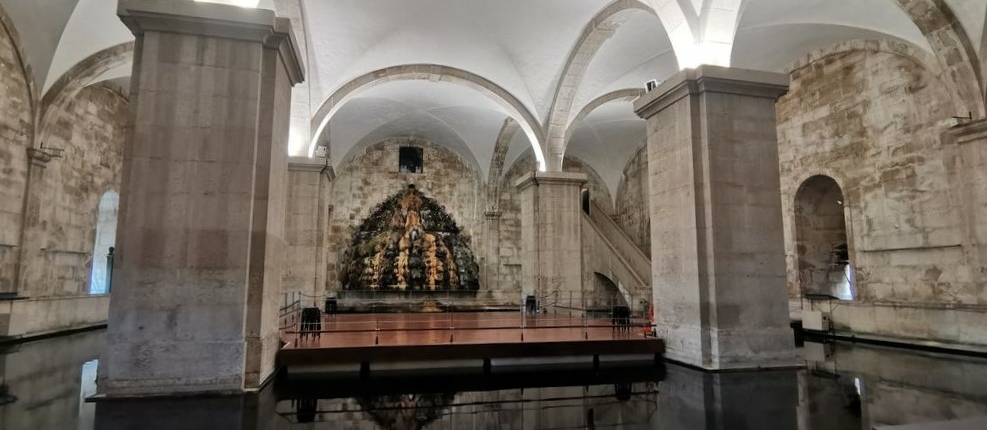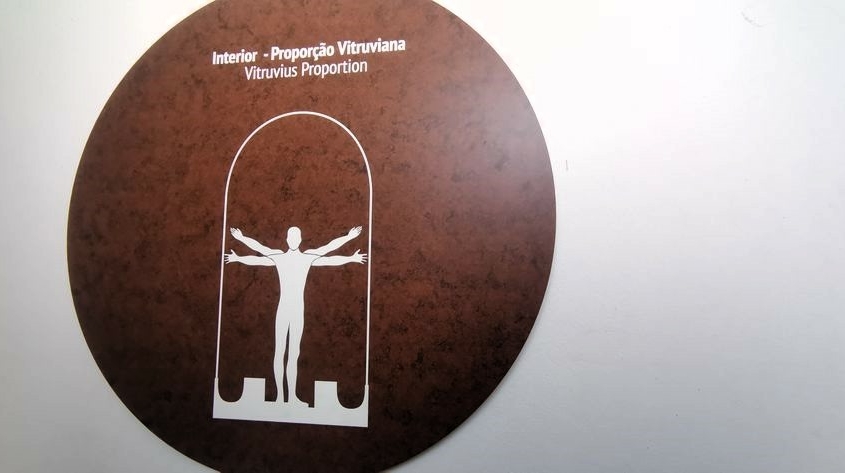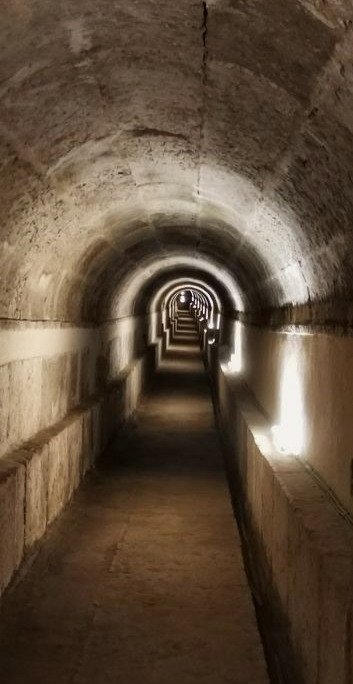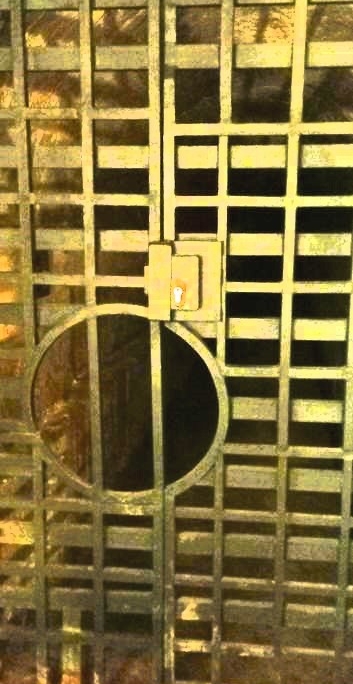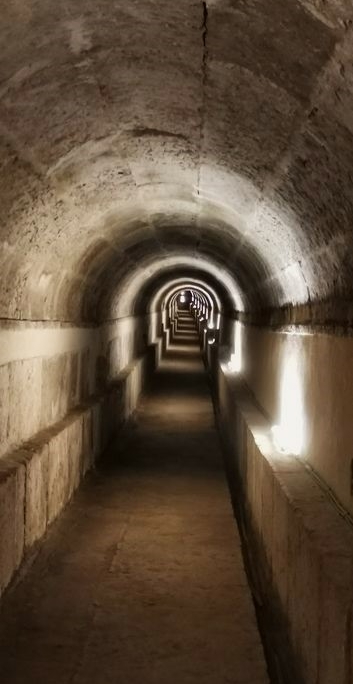The aqueduct das Águas Livres or Free Waters
An amazing work, a true emblem
The Aqueduct is a monumental work. The last of its size under Portuguese royalty.
It is called Águas Livres. And the most accurate translation would be Running Water Aqueduct.
The masterpiece was built between 1731 and 1799 during the reign of D. João V.
A visionary with progressive ideas, the king wanted to provide Lisbon with a drinking water supply system as the city expanded and became more industrialised.
Water had always been a problem in the capital, although there was a hot spring in Alfama, which means ‘hot spring’ in Arabic.
The aqueduct is remarkable for more than its magnificent arches over the Alcântara valley, north-east of Lisbon. The aqueduct is in fact more than 58 kilometres of tunnels, divided into 5 galleries to supply 30 fountains and reservoirs.
Although ingenious, the aqueduct retains an element of mystery. Some sections, rooms and reservoirs can be visited: the building reveals itself,and the history of Lisbon. It’s like playing detective.
Lisbon-affinities.com was able to enter the tunnels courtesy of the Water Museum, which manages the tours.
One of our favourites in Lisbon.
Alcântara, a majestic stone vessel.
The Águas Livres aqueduct originates in Belas, some thirty kilometres north of Lisbon. Some sixty springs come together to form the ribbon of water that once ran through the tunnels.
The engineers skilfully chose to span the Alcantara valley for this tamed river. The natural gradient has made it possible to supply the city with water by facilitating its distribution in the various arms of the system.
But to cross the valley, these huge arches had to be built. The highest is 65 metres high and 32 metres wide.
The water flowed through a stone corridor, protected from dirt and above all from evaporation.
Today, the arches can be visited, and the walk is impressive but not dangerous. You enter through the Campolide garden, which runs along the outside of the main conduit.
Before reaching the end of the aqueduct, a passageway allows you to cross the tunnel and return to the starting point.
You can then explore the inside of the aqueduct.
A durable structure that shaped the urban landscape
It may not be obvious at first glance, but the old drinking water supply system has shaped Lisbon.
For a start, it is a highly resistant structure: it survived the 1755 earthquake that devastated the city with virtually no damage.
It had just been finished building!
Some of its sections can still be seen, such as the one in the Amoreiras garden.
The Loreto Gallery starts at the Registry House (casa do Registo) and ends at the promontory of São Pedro d’Alcântara (near Bairro Alto).
It’s a unique visit in the half-light, which adds to the mysterious atmosphere. It’s a 1.6km walk, and it’s a real pleasure to return to the surface in the sunshine.
But there’s more!
As well as the majestic arches, which can also be visited, you can see the Mãe d’Água reservoir. A monumental reservoir designed like a cathedral.
And the Patriarchate reservoir (Principe Real Square), another deep structure.
The water company, Epal, provides all the information on its website www.epal.pt
Functional and efficient architecture.
The Águas Livres aqueduct is above all functional. Its appearance is classical, without excessive ornamentation. After all, its main purpose was to transport water.
However, there are a few structures that are worthy of note.
For example, the Rato chafariz (fountain). It is located in the place do Rato in the extension of the building of the Palace of the Dukes of Palmela (rua da Escola Politecnica). This imposing Baroque building was constructed in 1753-1754.
The fountain has 2 spouts and a reservoir for animals to drink from.
Note that the spouts, which are regularly replaced, disappear almost immediately.
Another chafariz could go unnoticed because of its simplicity. It dates from 1840 and was originally located higher up the hill. Three stone tubs and 5 spouts provided supplies. Today it’s an original restaurant.
The Murderer of the Aqueduct das Águas livres
The Aqueduct is also known for its assassin, who used to lurk there and throw his victims over the parapet. Diogo Alves, nicknamed the ‘tapper’, was suspected of sending some 70 people to the afterlife in this way.
Curiously, it was not for these horrible deeds that he was sentenced to death in 1840, but for the massacre of the family of a doctor he had robbed.
The name of Diogo Alves has remained associated with the Aqueduct, for a few extra thrills.
And the story within the story: Diogo Alves’ head, preserved for study by the faculty, is still in formaldehyde at Lisbon’s Faculty of Medicine.
An informed aqueduct
The aqueduct, galleries, reservoirs and chafariz are managed by EPAL, the company responsible for managing Lisbon’s water supply.
https://www.epal.pt/EPAL/menu/museu-da-%C3%A1gua
The Water Museum is the place to go for all tours.
The museum is well worth a visit: a permanent exhibition explains the water cycle in Lisbon. But above all it’s an opportunity to admire the Barbadinhos lift station, which is extremely well preserved.
You can read an article about it at https://www.lisbonne-affinités.com/leau-unmuseu-da-agua/
Tickets to visit the aqueduct itself can be purchased on site. Calçada da Quintinha, Campolide.
In the mid-19th century, the aqueduct was definitively deactivated.

